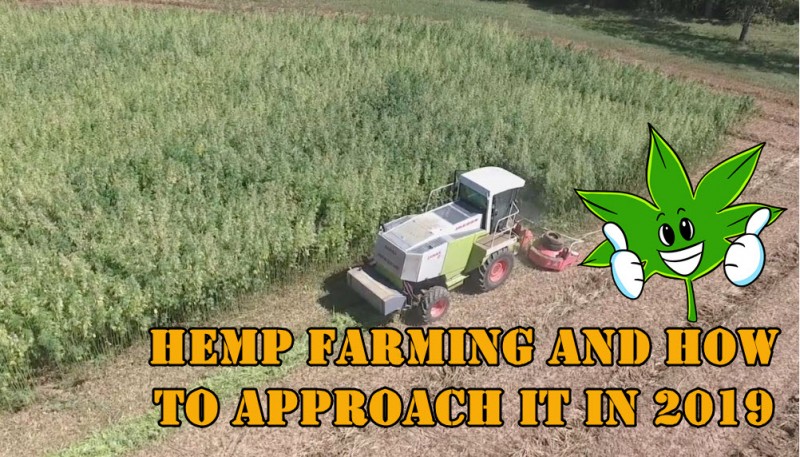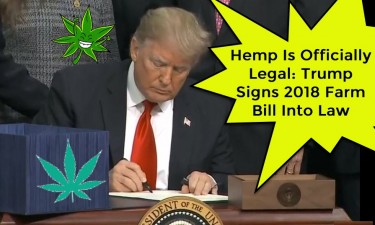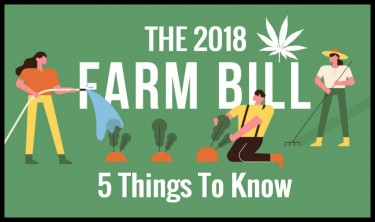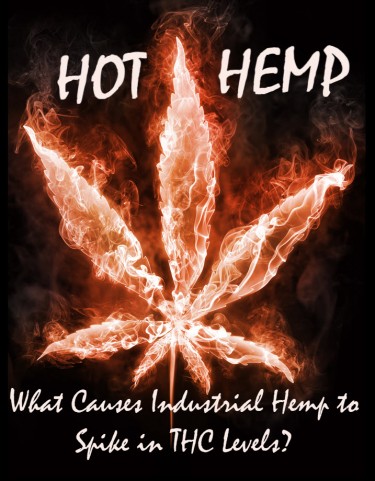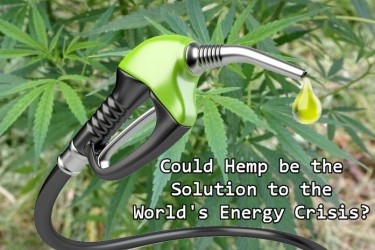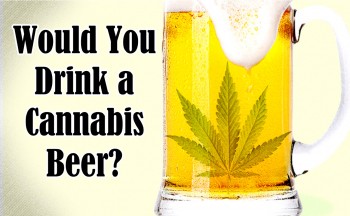Hemp Farming and How to Approach It in 2019
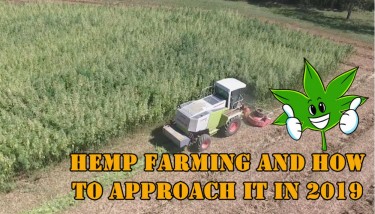
With the passage of the Farm Bill in 2018, many new companies and ventures are being backed to dive into the CBD and hemp indusry in America. While hemp has been declared legal by the executive branch of the government (Congress and the President), the FDA has said that CBD remains illegal. To understand this quagmire, it is similar to the US government passing a bill that states "Orange juice is now legal", but the FDA saying "Yes, but vitamin C is still illegal". How should consumer approach CBD in 2019? Is it legal or illegal? What about farmers and hemp growers, what should they be thinking about as they begin to grow industrial hemp in 2019?
Hemp or industrial hemp is a variety of Cannabis sativa plant species that are grown for industrial use. Hemp farming started many years ago. Currently, there are many farmers in this industry, more so in countries where marijuana and hemp are grown. Hemp farming is quite lucrative and has seen people from different professions leave their jobs to take up this farming.
Why Grow Hemp?
Hemp is a sustainable crop as it grows more vigorously than other plants. It requires less water, pesticides, herbicides, and fertilizers. Hemp has over 25,000 known uses and has proven to be friendly to the environment, hence favorable on an industrial scale.
Hemp can be used in making products such as clothing, shoes, animal food, ropes, textiles, biofuel, and bioplastics. Its stalks can even be used as alternative building materials.
One of the most lucrative industries that have drawn many farmers to hemp farming is the production of CBD oil. CBD oil is a medicinal compound in cannabis plants that contain no THC, so this makes it legal to be consumed in the United States.
Ideal Conditions for Growing Hemp
As stated earlier, hemp is a sustainable crop that requires little maintenance. It's also an annual crop that grows well in almost all parts of the country. It's important to note that this crop doesn't grow well in extreme dessert or high mountain areas.
The best growing conditions for hemp are those with warm weather and well-drained soils that are rich in organic matter. The hemp plant is grown directly to the soil unlike most crops, which are first grown in a pot before being transferred to where the plant will be. The seedlings need to be watered for the first six weeks. After that, the crop can stand fairly drought conditions.
Challenges Hemp Farmers Face
Generally, hemp farming promises many rewards for both the farmer and the community. Some believe hemp has the potential to sequester carbon, and thus reducing agricultural pollution. Some farmers also think hemp planting would help them make massive profits on marginal land. The industry, like many others, has its challenges. Here are a few before you invest your money in growing hemp.
Firstly, you'll need to practice large-scale farming to enjoy the reward that comes with large-scale agriculture. This means you'll need many lands to plant the crops. Industrial hemp farms need at least 50 acres or so to generate profits from this type of farming.
You also need to know that hemp farming is illegal in some states. There has been a legal battle between farmers and authorities in trying to have hemp legalized. To grow hemp, hemp farmers need a particular type of license from the authorities. This might cause you more money and a lot of paperwork that you had not initially indented to do. Additionally, hemp farmers are required to continually have their crops tested to ensure they don't pass a certain threshold of THC content. You should also be prepared to see your plants destroyed if the level of THC is found to be high.
ALSO CHECK THESE OUT...
WHAT IS THE FARM BILL AND HEMP GROWING, CLICK HERE.
OR..
FARM BILL RULES FOR HEMP AND MORE, CLICK HERE.
OR..
WHAT IS HOT HEMP WITH HIGHER THC THAN IT WAS SUPPOSE TO HAVE?

